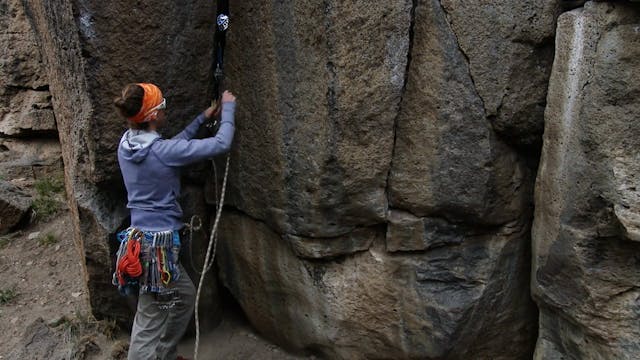Traditional Climbing: 13. Assessing Trad Anchor Rock Quality
Traditional Climbing
•
1m 38s
In this video we look at ways to assess rock quality for your traditional anchor. Consider two points:
1. Check to make sure the rock itself is solid by patting the rock with your hand. Listen for hollow sounds which might identify a detached block that is not visibly obvious. Avoid placing protection points in any rock that sounds hollow.
2. Visually verify that the crack system you want to build your anchor in is not part of a detached block. Even a larger block, while it may not rip out of place in the event of a fall, could shift, thus changing the size of the crack and causing the cam to fail.
Important note: Cams hold a fall by pushing perpendicular to the long axis. This means you can put as much as double the force of the fall on the rock—which means rock quality is of the utmost importance when using cams.
We hope you found this video helpful. Feel free to comment below with questions or thoughts!
Please remember, climbing is inherently dangerous. Climb at your own risk.
Up Next in Traditional Climbing
-
Traditional Climbing: 14. Alternative...
What happens if you run out of slings while leading a pitch and arrive at the anchor with only a few cams—then realize you also forgot to grab your partner’s cordelette when you swung leads at the last transition. Don’t worry, use your rope!
Step 1: Place 3 pieces of gear.
Step 2: Give your...
-
Traditional Climbing: 15. Alternative...
In this video we look at another way to build a traditional anchor in the event the climber has made it to the top of the route, has three pieces of gear to place, but does not have a cordelette or sling.
Step 1: Place your three pieces of gear.
Step 2: Give yourself a couple arms’ lengths ...
-
Traditional Climbing: 16. Trad Anchor...
In this video we review considerations for building a traditional anchor with slings, in the case where a cordelette is not available. To do this you may need a mix of shoulder length slings and double length slings.
Step 1: Place three solid pieces of gear.
Step 2: Using a shoulder length ...


